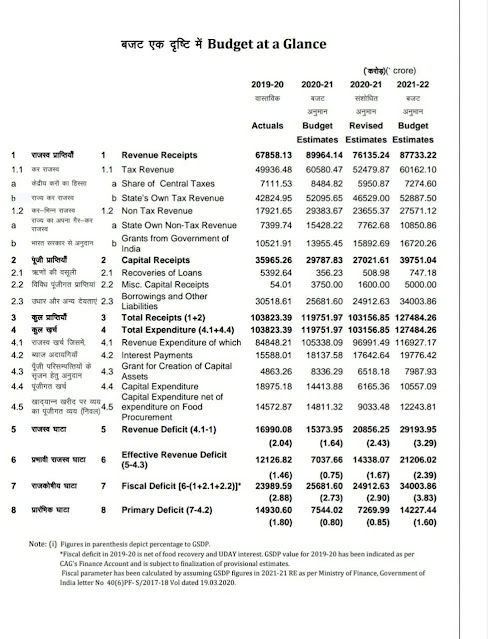Admissibility of DA on Tour in Haryana
-Dr.
Lalit Kumar Setia
As
per Haryana Civil Service Rules (TA) Rules, 2016, the Dearness Allowance is
admissible to the employees who are spending a day or days away from the
headquarters. The Dearness Allowance is granted for covering the cost of daily
expenses incurred by the employee in consequence of such absence. However, the
place of destination should be at least 20 kilometers away from the headquarter (bus stand to bus stand).
Grading of employees for admissibility of DA
As
per rule 10 of Haryana Civil Service (TA) Rules, 2016, the employees are
divided into 5 grades on the basis of their grade pay.
Grade V employees
The
Grade V are the employees with the lowest grade pay i.e. between Rs. 1300 to Rs.
2400. Within Haryana and Chandigarh, Rs. 300 per day daily allowance is
admissible to the employees. However, if the tour is outside Haryana and
Chandigarh, then Rs. 400 per day dearness allowance is admissible to cover the
cost of incurred expenses.
The employees drawing pay in level 4 or below, as per Haryana Civil Service Revised Pay rules, 2016 notified on 20th June 2018; are covered in grade V and admissible for DA as stated above.
Grade IV employees
The
employees with grade pay above Rs. 2400 i.e. from Rs. 2500 to Rs. 4200 are
admissible for Dearness Allowance Rs. 400 per day for a tour within Haryana and
Chandigarh and Rs. 500 per day for tours outside Haryana and Chandigarh. While
calculating the Travelling allowance, such dearness allowance is included in
the TA Bill.
The employees drawing pay in level 5 to level 7, as per Haryana Civil Service Revised Pay rules, 2016 notified on 20th June 2018; are covered in grade IV and admissible for DA as stated above.
Grade III employees
The
dearness allowance is granted Rs. 500 per day (for a tour within Haryana and
Chandigarh) and Rs. 600 per day (for a tour outside Haryana and Chandigarh) as
stated in the letter number 5/27/98-1FR (FD) dated 20th June 2018 notified by Finance Department Haryana,
to the employees with grade pay from Rs. 4600 to 8800. The judges of the junior
division are also covered in this category.
The employees drawing pay in level 8 to level 15, as per Haryana Civil Service Revised Pay rules, 2016 notified on 20th June 2018; are covered in grade III and admissible for DA as stated above.
The officers/officials drawing pay in All India Services Revised Pay Rules and getting pay in level 10 to 13, are admissible for DA applicable to Grade III employees as stated above.
Grade II Employees in TA Rules
The
judges of the senior division are covered in this category of employees. The employees
with Grade pay from Rs. 8900 to Rs. 9800 are admissible to get Rs. 600 per day
for a tour within Haryana and Chandigarh and Rs. 700 per day for tours outside
Haryana and Chandigarh.
The employees drawing pay in level 16 to level 18, as per Haryana Civil Service Revised Pay rules, 2016 notified on 20th June 2018; are covered in grade II and admissible for DA as stated above.
The officers/officials drawing pay in All India Services Revised Pay Rules and getting pay in level 14, are admissible for DA applicable to Grade II employees as stated above.
Grade I Employees
The
employees with grades pay more than Rs. 9800 i.e. above Rs. 10000 Grade Pay. The
judges at the district level or additional district judges are also covered in this
category. Rs. 700 per day DA is admissible if the tour is within Haryana and
Chandigarh and in case the tour is outside Haryana and Chandigarh, Rs. 800 per
day DA is admissible.
The employees drawing pay in level 19 and above, as per Haryana Civil Service Revised Pay rules, 2016 notified on 20th June 2018; are covered in grade I and admissible for DA as stated above.
The officers/officials drawing pay in All India Services Revised Pay Rules and getting pay in level 15 and above, are admissible for DA applicable to Grade I employees as stated above.
I hope it is clear that how much DA is admissible to Haryana Government employees while on tour. Any queries?
*Copyright © 2021 Dr. Lalit Kumar. All rights reserved.
This article is written by Dr. Lalit Kumar Setia; a renowned author and trainer. He completed his Doctorate in Commerce from Kurukshetra University Kurukshetra and MBA in Information Technology from GJU, Hisar. He also wrote two books, 15 research papers, and organized more than 200 Training Courses during his working period since 2006 in Haryana Institute of Public Administration, Gurugram. The article was published on 9th October 2021 and last updated on 9th October 2021. The writer can be contacted on lalitkumarsetia@gmail.com
More Articles of Your Interest
https://drlalitsetia.blogspot.com/2021/07/compliance-of-206ab-for-ddos.html
https://drlalitsetia.blogspot.com/2019/08/details-for-e-filing-income-tax-return.html
https://managerialadministration.blogspot.com/2021/09/web-enabled-online-treasury-information.html



















